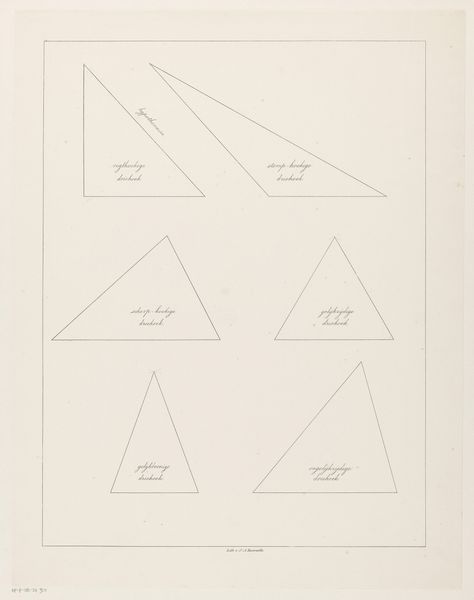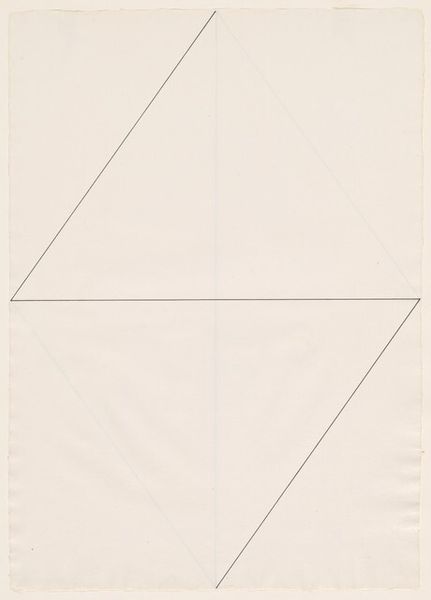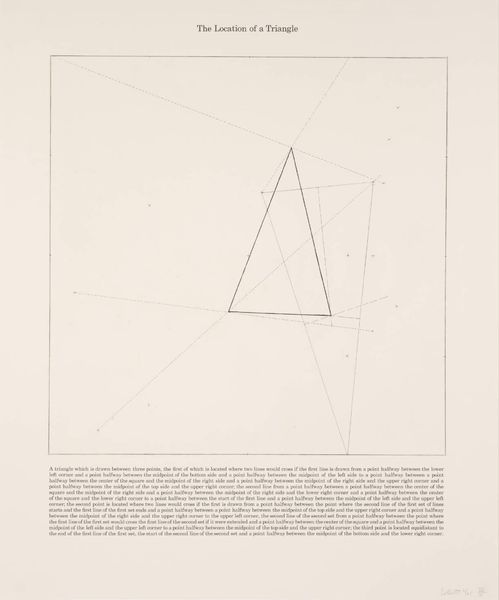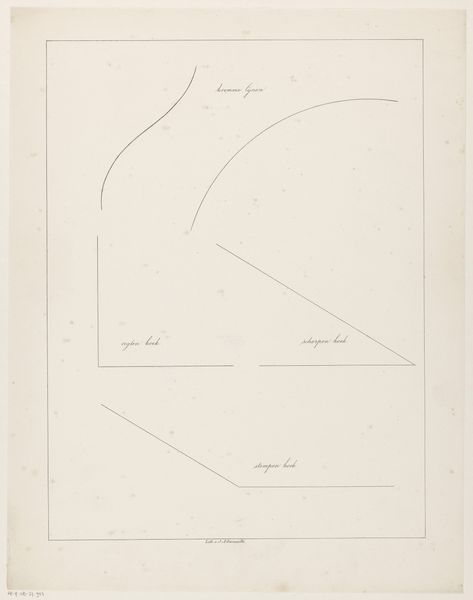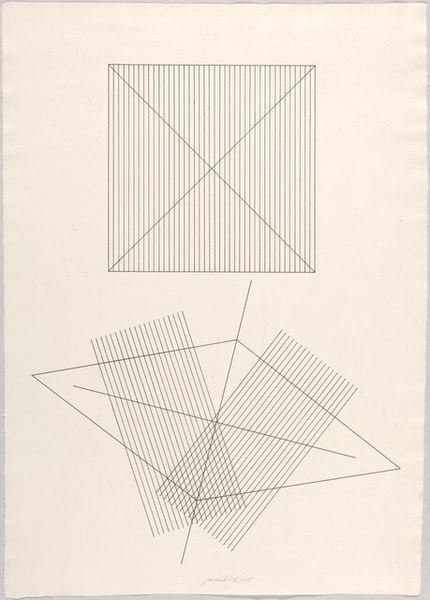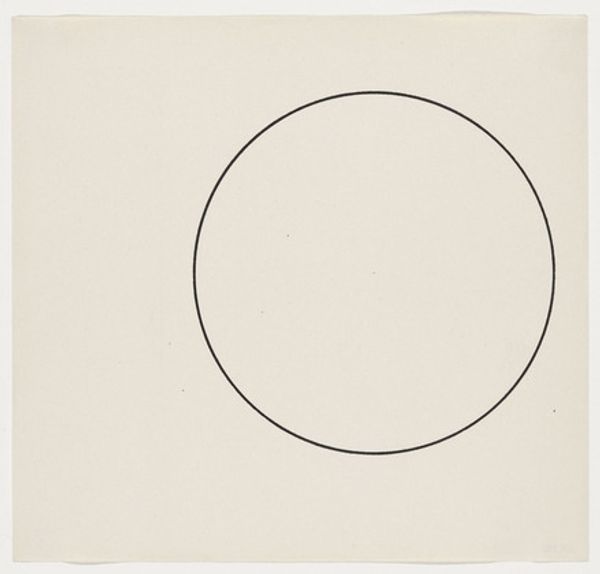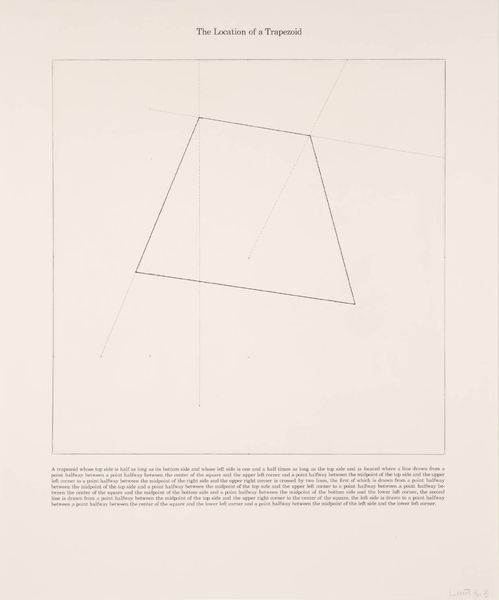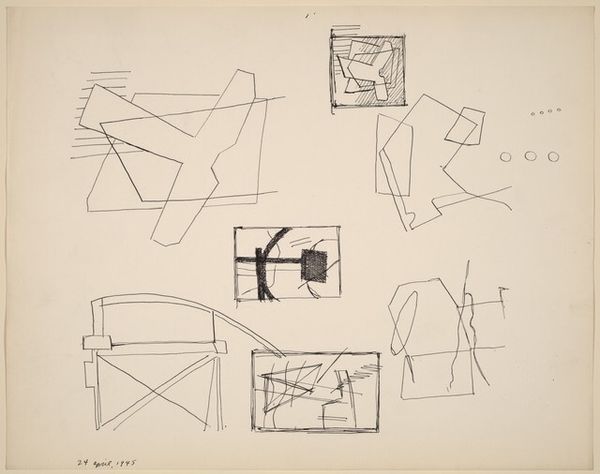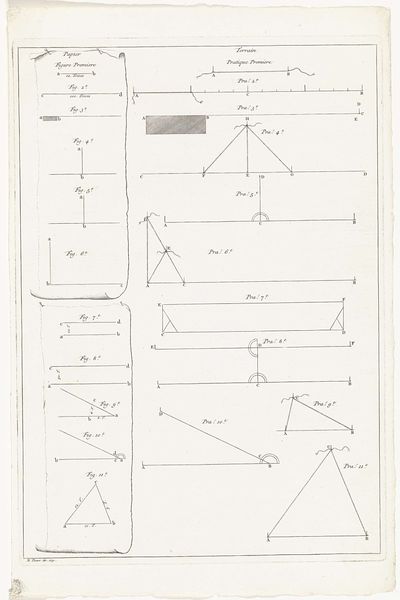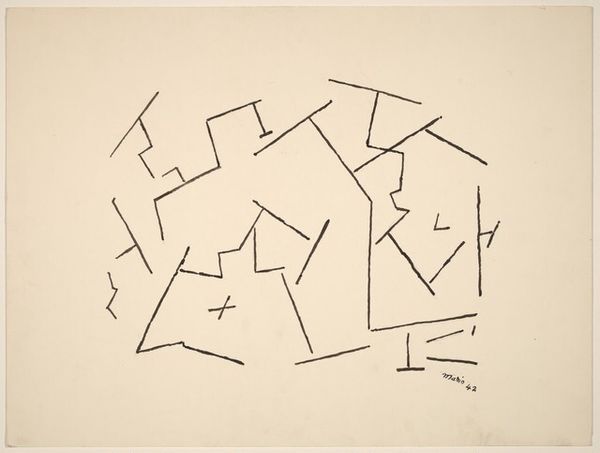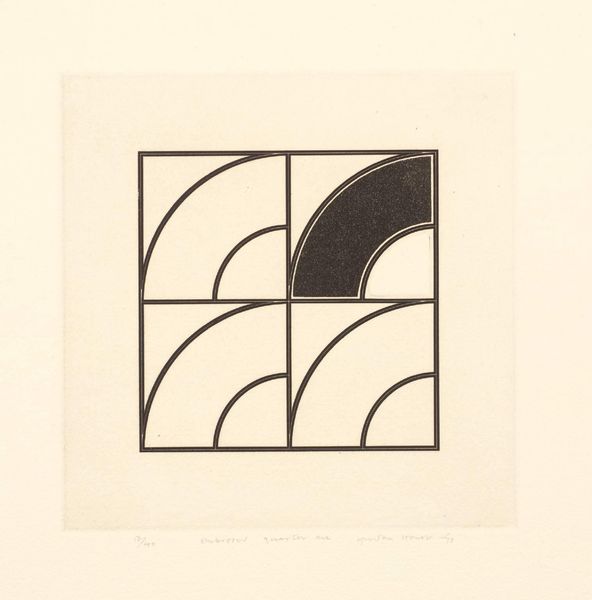
drawing, paper, pen
#
drawing
#
classical-realism
#
paper
#
form
#
geometric
#
abstraction
#
line
#
pen
#
academic-art
Dimensions: height 545 mm, width 425 mm
Copyright: Rijks Museum: Open Domain
Curator: This drawing, "Circels verdeeld door lijnen," which translates to Circles divided by lines, dates from the period of 1820 to 1833. The artist, Jean Augustin Daiwaille, used pen and paper to produce this intriguing study in form, which is now held here at the Rijksmuseum. Editor: It strikes me as an odd dance between order and mystery. These meticulously drawn circles and squares are compartmentalized with lines, almost as if mapping a hidden code. What do you think is Daiwaille trying to represent through these symbols? Curator: From my perspective, this work shows Daiwaille really grappling with precision in craft. Notice the subtle variations in line weight, how deliberately he wields pen on paper to create these distinct, contained shapes. The labour that manifests from the production becomes its own artistic statement. Editor: Interesting. I see how the lines create these compartments of form, but the script floating above each geometrical rendering, suggesting "division" or "center", takes us into an almost mystical experience, hinting at larger hidden connections within geometrical principles. Curator: Ah, but is it truly "mystical", or simply a workman laying out the guidelines for geometrical practices of his day? I see utility at work, perhaps didactic intent. A demonstration on paper of material application for mathematical theory. The creation serves a pragmatic purpose within that world. Editor: Perhaps it's both! These diagrams—geometric forms combined with text labels—strike me almost as mandalas. Doesn't the interplay of the forms create something that invites contemplative interpretation beyond pure utility? Could he be channeling deeper philosophical meaning into otherwise strict parameters? Curator: But can that "meaning" truly stand detached from its purpose as design? I question attributing "meaning" without considering its material origins and production processes rooted firmly within labour's framework. Editor: It’s a puzzle, and I appreciate its enigma—an artist lost in translation, hinting that even mathematics and practical crafts conceal hidden echoes. Curator: And I appreciate you reminding me how much visual shorthand informs the everyday application of technical mastery. Thanks for illuminating a different plane of possibility here.
Comments
No comments
Be the first to comment and join the conversation on the ultimate creative platform.
